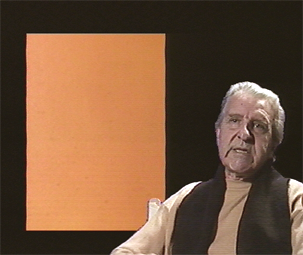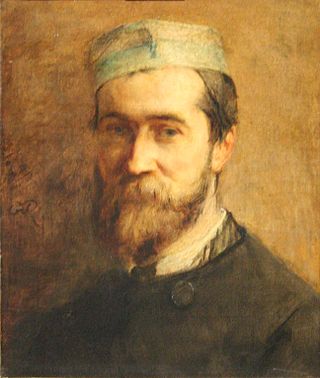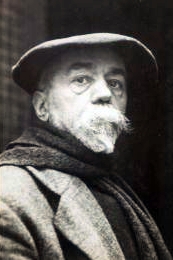Related Research Articles

Aix-en-Provence, or simply Aix, is a city and commune in southern France, about 30 km (20 mi) north of Marseille. A former capital of Provence, it is the subprefecture of the arrondissement of Aix-en-Provence, in the department of Bouches-du-Rhône, in the region of Provence-Alpes-Côte d'Azur. The population of Aix-en-Provence is approximately 145,000. Its inhabitants are called Aixois or, less commonly, Aquisextains.

Adolphe Joseph Thomas Monticelli was a French painter of the generation preceding the Impressionists.

Eugène Louis Boudin was one of the first French landscape painters to paint outdoors. Boudin was a marine painter, and expert in the rendering of all that goes upon the sea and along its shores. His pastels, summary and economic, garnered the splendid eulogy of Baudelaire; and Corot called him the "King of the skies".

Fernand Leduc was a Canadian abstract expressionist painter and a major figure in the Quebec contemporary art scene in the 1940s and 1950s. During his 50-year career, Leduc participated in many expositions in Canada and France. He was born in Viauville, Montreal, Quebec.
Orly is a Parisian suburb.

Émile Charles Joseph Loubon was a French painter, known for his panoramic landscapes of Provence, featuring figures and animals.
Jean "Johnny" Pigozzi, heir to the CEO of the automobile brand Simca, is an art collector, photographer and fashion designer. He lives in Geneva.

Jacques Pellegrin was a French painter.

Victor Orly is a contemporary Ukrainian-born French painter, one of the major representatives of a new-age impressionism, the president of cultural and art association Capitale, a member of Guangdong Yuehua Painting Academy, Guangzhou, China.
JonOne, also known as Jon156, is an American graffiti artist. Originally from New York, he lives and works in Paris.

Charles Garabed Atamian was an Ottoman-born French painter of Armenian ethnicity.
Aimé Venel is a French painter and drawer who focuses on figurative and symbolist style. He creates his own style of figurative arts elegance that primarily lies between symbolist painting and expressionism art, closely related to romanticism. He is a self-taught man whose artwork is influenced by women's beauty. Aimé Venel was a Scientologist for years, before withdrawing from the movement.

Jean Roque (1880–1925) was a French painter.
Alfred Rozelaar-Green, RWA was a British artist and founder of the Anglo-French Art Centre in St. John's Wood.

Jean Joseph Marie Alphonse Moutte was a French painter in the Naturalist style, known for his genre scenes and coastal landscapes.

Jean Barnabé Amy was a French sculptor who mainly specialized in bas relief. He was close to members of the Félibrige, a society that promoted Provençal culture, and often made statues, busts or reliefs of members of this society.

Marie Joseph Jean Raymond Silbert, known as José Silbert was a French Orientalist painter.

Davide Paolo Dellepiane, known as David Dellepiane was a French painter, lithographer and poster artist of Italian origin.
Jean Henry, known as Henry d'Arles was a French painter, mainly known for seascapes and mythological scenes.
References
- 1 2 3 4 5 6 Alauzen Di Genova, Maitres Provençaux: de 1859 à nos jours. Galerie Jouvène, 1998, p.14-108.
- ↑ Capitale Association archive.
- ↑ Léon Lagrange, Exposition de Marseille, Gazette des Beaux-Arts, November 1, 1859, p.186.
- ↑ Jean-Max Tixier, Preface to the book of Alauzen Di Genova, Maitres Provençaux: de 1859 à nos jours. Galerie Jouvène, 1998, p.8-9.
- 1 2 Capitale & Victor ORLY Gallery archive.